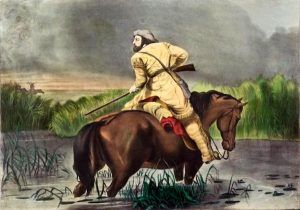
The Enduring Enigma of Love: Valentine’s Day as a Rube Herring of History
Every February 14th, the world is awash in a tide of red and pink. Hearts, flowers, chocolates, and declarations of love saturate our culture, driving an economy built on romance. Valentine’s Day, it seems, is an ancient, immutable celebration of affection, deeply rooted in history and tradition. But beneath this glossy, commercially polished surface lies a fascinating historical "rube herring"—a captivating distraction that leads us away from any clear, definitive origin story. Far from a straightforward tale of saints and lovers, Valentine’s Day is a tangled knot of pagan rites, poetic invention, religious reappropriation, and capitalist ingenuity, making its true origins as elusive as Cupid’s arrow.
To call Valentine’s Day a "rube herring" is to acknowledge its profound ability to misdirect. We think we know its story, or at least we feel its ancient pull. Yet, the more one delves into its past, the more one realizes how little concrete evidence supports the popular narratives. It’s a holiday that has been continually reinvented, reimagined, and repurposed, each layer of its evolution adding another twist to its beguiling, almost mythical, identity.
The first major historical red herring emerges with the very name of the holiday: Saint Valentine. Logic dictates there must be a single, definitive figure whose martyrdom or good deeds inspired this day of love. Yet, the historical record presents not one, but at least three distinct Saint Valentines, all martyred in the late Roman Empire, and all with largely apocryphal stories.

One popular legend recounts Valentine as a priest who defied Emperor Claudius II’s decree that Roman soldiers should not marry, believing that single men made better warriors. Valentine, supposedly, secretly married young lovers, an act for which he was imprisoned and eventually executed. Before his death, he is said to have miraculously healed the jailer’s daughter and sent her a final letter signed "From your Valentine," thus giving birth to the tradition of Valentine’s notes. Another legend speaks of a Valentine of Terni, a bishop who was also martyred by Claudius II. A third suggests a Valentine who helped Christians escape harsh Roman prisons.
The problem, as historian Professor Jack B. Oruch notes in his work "St. Valentine, Chaucer, and Spring in February," is that these narratives are largely hagiographical—biographies of saints written to inspire devotion, often embellished or entirely fabricated. The Catholic Encyclopedia itself acknowledges the significant ambiguity: "The name of Valentine is given to many saints… and there is no reason to connect the feast day with any particular one of these martyrs." The early Church records are so muddled that in 496 A.D., Pope Gelasius I declared February 14th the Feast of Saint Valentine, but he essentially admitted that while a martyr named Valentine existed, "he is one of those whose names are justly reverenced among men, but whose acts are known only to God." This papal decree, far from clarifying the origins, cemented a feast day around a figure whose identity was already a mystery, setting the stage for centuries of romantic projection onto a blank historical canvas.
This ambiguity provides fertile ground for the second great rube herring: the persistent, yet largely unsubstantiated, link to the ancient Roman festival of Lupercalia. Celebrated from February 13th to 15th, Lupercalia was a pagan fertility festival, dedicated to Faunus (the Roman god of agriculture) and Romulus and Remus. Its rituals involved animal sacrifice, feasting, and the somewhat raucous tradition of young men, clad only in strips of sacrificed goat hide, gently slapping women with these hides, believed to bestow fertility. A popular theory suggests that the early Christian Church, unable to stamp out this popular pagan festival, simply "Christianized" it by placing the Feast of Saint Valentine in its stead.
While the timing is certainly convenient, most historians now agree that the connection between Lupercalia and Valentine’s Day is largely circumstantial and, at best, thematic. There is no direct historical evidence of an unbroken lineage. "The Lupercalia connection is a myth," states Dr. Alison Ruth Rowlands, a historian specializing in early modern Europe. "There is no evidence that Valentine’s Day replaced Lupercalia." The rituals of Lupercalia bear little resemblance to the expressions of courtly love that later defined Valentine’s Day. It’s more likely that the association was retroactively made by later scholars and writers seeking to fill the historical void surrounding Valentine’s Day’s origins, providing a compelling, if inaccurate, pagan backstory.
The true genesis of Valentine’s Day as a celebration of romantic love—the third and arguably most significant rube herring—lies not in ancient Rome or the early Christian Church, but in the medieval imagination, specifically with the English poet Geoffrey Chaucer. In his 1382 poem, "Parlement of Foules," Chaucer wrote:
"For this was on seynt Valentynes day,
Whan every foul cometh there to chese his make,
Of every kynde that men thynke may;
And that so huge a noyse gan they make
That erthe and eyr and tre and every lake
So ful was of hem, that unethe was there space
For me to stonde, so ful was al the place."
This passage, which describes birds gathering to choose their mates on Saint Valentine’s Day, is widely considered the first recorded instance of the day being associated with romantic love. Chaucer was writing in the tradition of courtly love, which flourished in medieval Europe, emphasizing chivalry, nobility, and often idealized, unrequited passion. Crucially, in 14th-century England, February 14th was believed to be the beginning of birds’ mating season. Chaucer simply linked an existing saint’s day, whose historical significance was already vague, to a natural phenomenon and the burgeoning concept of courtly love.
This was not a historical continuation but a poetic invention. Other medieval poets, such as Charles, Duke of Orléans, who wrote a poem to his "tres doulce Valentinée" while imprisoned in the Tower of London in 1415, followed suit. The tradition slowly took root among the European aristocracy, evolving into the exchange of handwritten love notes and tokens. It was a cultural construct, a beautiful piece of literary engineering, rather than an organic outgrowth of ancient rites. This is the moment the "rube herring" truly takes shape—a romantic holiday born not of historical fact, but of artistic fancy, layered onto an already ambiguous saint’s day.
From the medieval courts, the tradition of Valentine’s Day slowly diffused, but it remained largely a niche celebration until the 18th and 19th centuries, when the industrial revolution and the rise of mass production transformed it into something recognizable today. The Victorian era, with its emphasis on sentimentality and elaborate social rituals, embraced Valentine’s Day with gusto. Printing technology allowed for the mass production of "valentines"—elaborate, often lace-trimmed cards adorned with cupids, hearts, and romantic verses.
Esther Howland, an American businesswoman often called "the Mother of the American Valentine," was instrumental in this commercial boom. In the 1840s, inspired by intricate English valentines, she began importing paper lace, ribbons, and ornate decorations and assembling them into cards, eventually building a highly successful business. Her innovation made sending valentines accessible and fashionable, transforming a bespoke aristocratic custom into a popular middle-class tradition. This commercialization further cemented the holiday’s romantic identity, solidifying its symbols and rituals. The manufactured sentimentality of the Victorian age created the framework for the modern Valentine’s Day, effectively burying any remaining faint echoes of its murky past under layers of lace and heartfelt prose.
Today, Valentine’s Day is a global phenomenon, a multi-billion dollar industry driven by florists, chocolatiers, jewelers, and greeting card companies. The historical rube herring is complete: a holiday built on an elusive saint, loosely tied to a pagan festival, truly born of a poet’s imagination, and finally molded by capitalism into a powerful cultural force. We celebrate a day whose origins are so muddled that its very existence as a "day of love" is a testament to humanity’s enduring desire for ritual, romance, and connection.
Perhaps the greatest irony of the Valentine’s Day rube herring is that its lack of a clear, coherent origin story doesn’t diminish its power; it enhances it. The ambiguity allows each generation, each culture, and each individual to project their own meaning onto the day. It is a blank canvas upon which we paint our affections, a flexible framework that adapts to changing social norms and expressions of love. We celebrate it not for its historical accuracy, which is negligible, but for the feelings it evokes and the opportunities it provides to express sentiments that might otherwise remain unsaid.
So, as the roses are bought, the chocolates consumed, and the cards exchanged this February 14th, let us appreciate Valentine’s Day not just for its declared purpose, but for its remarkable journey through history. It is a testament to the human capacity for myth-making, poetic invention, and the creation of meaning where none explicitly existed. It is a truly magnificent rube herring—a beautiful, misleading trail that ultimately leads us not to a definitive historical truth, but to the enduring, universal desire for love itself.



